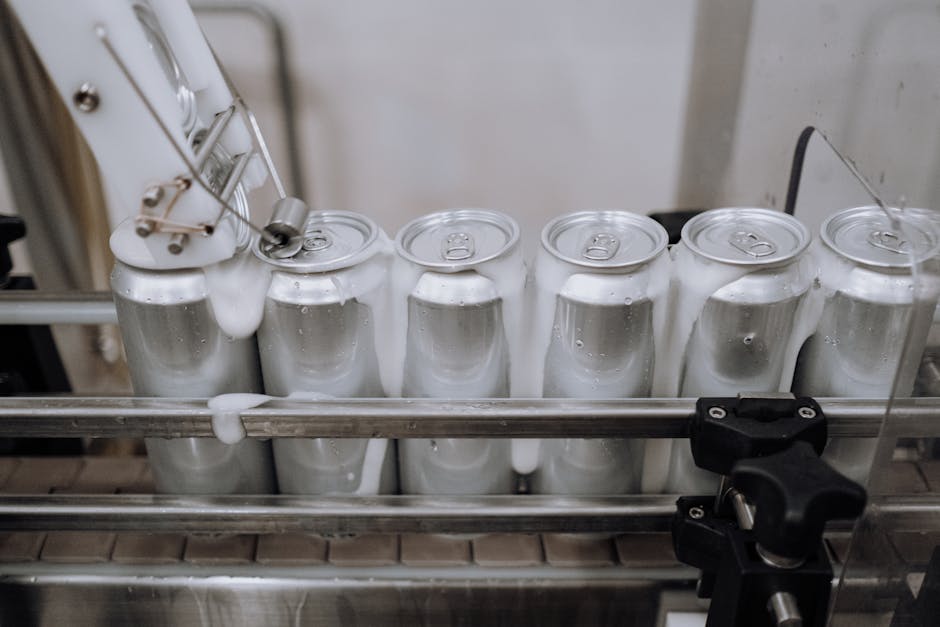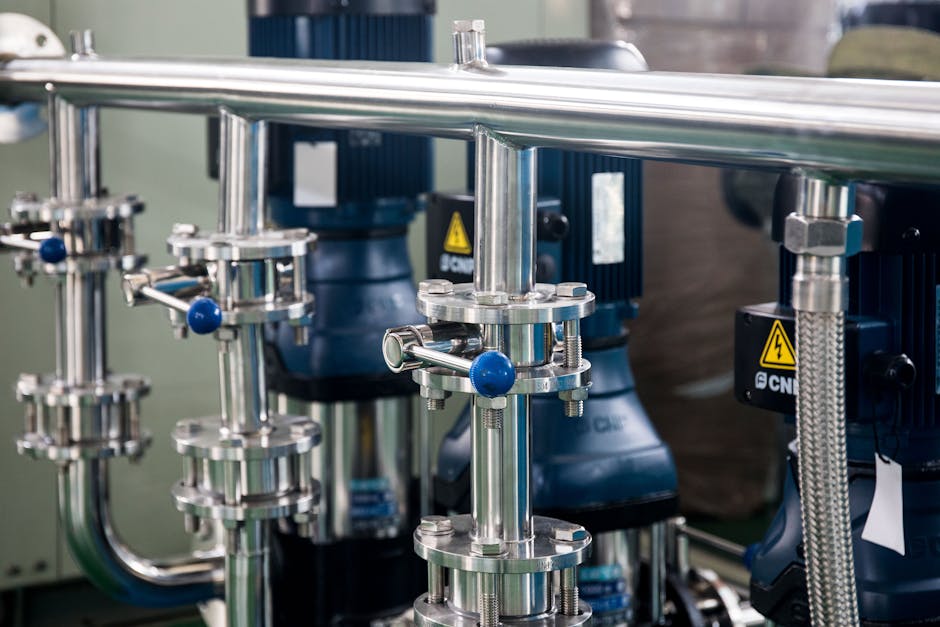Robots at Work: Penny-Wise or Pound-Foolish?
In the realm of business operations, the integration of robotic technology has become a focal point in the pursuit of efficiency and cost-effectiveness. However, the decision to implement robotic automation warrants careful consideration, as it encompasses a spectrum of potential advantages and drawbacks.
‘Robots at Work: Penny-Wise or Pound-Foolish?’ delves into this complex landscape, aiming to provide a comprehensive understanding for those seeking to make informed choices about workflow automation.
Evaluating the potential for cost reduction, productivity gains, and quality improvement, this exploration also addresses the critical aspects of scalability, flexibility, and the associated risks.
Through a systematic analysis, this discussion endeavours to offer valuable insights to enable prudent decision-making in the realm of robotic process automation.
Key Takeaways
- Streamlined processes and automation of tasks lead to improved workflow efficiency and reduced operational costs.
- Robotic Process Automation (RPA) allows employees to focus on higher-value tasks, increasing overall productivity.
- RPA ensures error prevention and improved quality of outputs through consistent and accurate execution of tasks.
- RPA solutions offer scalability and flexibility, allowing quick adjustments to processes and resource reallocation for strategic initiatives.
Cost Reduction Through Workflow Automation

Through workflow automation, businesses can achieve significant cost reductions. By streamlining processes and eliminating manual tasks, workflow efficiency is greatly improved. This leads to reduced operational costs, as fewer resources are required to complete tasks in less time. Automation also minimises the risk of errors, further contributing to cost savings by avoiding the potential expenses associated with rectifying mistakes. Furthermore, the time saved through automation allows employees to focus on higher-value tasks, thereby increasing overall productivity and contributing to the company’s bottom line.
Implementing automated workflows not only reduces direct costs but also enables businesses to reallocate their resources strategically. This reallocation can lead to improved customer service, product innovation, or market expansion, ultimately generating more revenue. Additionally, the data collected through automated workflows provides valuable insights that can inform decision-making and drive further efficiencies.
It is important for businesses to carefully evaluate their processes and identify opportunities for automation to maximise cost savings and stay competitive in today’s rapidly evolving market.
Productivity Gains From Robotic Process Automation

Robotic Process Automation (RPA) has demonstrated a measurable increase in productivity for businesses across various industries. RPA has been instrumental in enhancing efficiency by automating repetitive, rule-based tasks, allowing employees to focus on higher-value activities. This increased productivity stems from the ability of RPA to work continuously without breaks, leading to faster task completion and reduced error rates. By streamlining workflows and minimising manual intervention, RPA contributes to significant time and cost savings for organisations.
While the productivity gains from RPA are undeniable, there is a growing concern regarding labour displacement. As RPA takes over mundane and repetitive tasks, some employees may fear that their roles could become obsolete. However, a more optimistic view sees RPA as a means to elevate the nature of work, allowing humans to engage in more strategic and creative endeavours.
Consequently, businesses need to proactively address the impact of RPA on the workforce, ensuring that employees are upskilled and redeployed to more meaningful roles. Ultimately, the productivity gains from RPA must be balanced with the ethical and social considerations surrounding labour displacement.
Quality Improvement and Error Reduction

With the implementation of Robotic Process Automation (RPA), businesses have witnessed a notable improvement in quality and a reduction in errors. RPA ensures error prevention by executing tasks consistently and accurately, thereby enhancing efficiency. By automating routine processes, RPA minimises the risk of human error, leading to improved quality and reliability of outputs. This not only enhances the overall performance but also boosts customer satisfaction and trust in the products or services offered. Moreover, RPA allows for real-time monitoring and analysis, enabling businesses to identify and address potential errors promptly, thus contributing to a proactive approach in error reduction.
Furthermore, RPA facilitates the streamlining of workflows and the standardisation of processes, leading to increased efficiency and reduced errors. The technology’s ability to handle repetitive tasks with precision and speed contributes to a decrease in errors caused by fatigue, inattentiveness, or other human factors. Ultimately, the integration of RPA in business operations leads to an overall improvement in quality and a significant reduction in errors, fostering a more reliable and consistent output.
Scalability and Flexibility of Robotic Automation

The newfound quality improvement and error reduction brought about by the implementation of Robotic Process Automation (RPA) sets the stage for a discussion on the scalability and flexibility of this technology within business operations. When considering the scalability and flexibility of robotic automation, several key points come to the forefront:
-
Scalability: RPA solutions can be scaled up or down based on the company’s requirements, allowing for seamless integration with evolving business needs.
-
Adaptability: The adaptability of robotic automation enables quick adjustments to processes, ensuring that the technology can keep pace with changing business demands.
-
Flexibility: RPA offers the flexibility to handle a variety of tasks across different departments, promoting operational efficiency and agility.
-
Efficiency: The efficiency gained through robotic automation allows businesses to reallocate resources to more strategic initiatives, driving overall productivity.
As businesses aim to maintain control and streamline their operations, the scalability, adaptability, flexibility, and efficiency of robotic automation play pivotal roles in achieving these objectives. However, it is important to also consider the potential risks and limitations of this technology as it continues to reshape the modern workplace.
Risks and Limitations of Robotic Process Automation

As businesses increasingly implement robotic automation, it is imperative to analyse the potential risks and limitations associated with this technology. Ethical considerations are of paramount importance when integrating robotic process automation (RPA) into business operations. It is crucial to ensure that RPA implementation does not compromise ethical standards, especially in areas such as data privacy, security, and decision-making processes.
Additionally, the potential for job displacement is a significant concern. While RPA can streamline processes and increase efficiency, it also has the potential to replace human workers, leading to unemployment and economic instability in the workforce.
Furthermore, there are limitations to consider when adopting RPA. Not all processes are suitable for automation, and complex decision-making tasks may still require human intervention. RPA solutions may also be constrained by the existing infrastructure and legacy systems within an organisation, making integration challenging. Moreover, the initial investment and ongoing maintenance costs associated with RPA implementation should be carefully evaluated to determine the long-term feasibility and return on investment.
Frequently Asked Questions
How Do Robots at Work Impact Employe Job Satisfaction and Morale?
Robots at work can impact employe job satisfaction and morale by influencing employe engagement, productivity, job retention, and work-life balance. Understanding these effects is crucial for maintaining a motivated and fulfilled workforce.
What Are the Potential Ethical Implications of Using Robots for Work Tasks?
When considering the use of robots for work tasks, ethical considerations loom large. The societal impact of automation raises questions about job displacement and the potential devaluation of human labour, necessitating careful evaluation and thoughtful decision-making.
How Do Robots at Work Affect the Overall Company Culture and Dynamics?
Robots at work can significantly impact company culture and dynamics. While they may enhance efficiency, they can also alter collaboration and team dynamics. It’s crucial to carefully manage their integration to ensure a positive impact on organisational culture.
What Are the Long-Term Effects of Relying Heavily on Robotic Automation for Business Processes?
Relying heavily on robotic automation for business processes can yield significant long-term cost benefits, enhance productivity, and improve efficiency. However, it’s crucial to carefully assess the potential impact on workforce dynamics and organisational culture.
How Do Robots at Work Impact the Overall Customer Experience and Satisfaction?
Technological advancement through robots at work significantly impacts the overall customer experience and satisfaction. They streamline processes, enhance efficiency, and provide personalised interactions, elevating the customer journey and fostering long-term loyalty.
Conclusion
In conclusion, the integration of robotic process automation in the workplace symbolises the potential for cost reduction, productivity gains, and quality improvement.
However, it also represents the risks and limitations that come with this technology.
Organisations must carefully weigh the benefits and drawbacks of implementing robotic automation to ensure that they are not being penny-wise and pound-foolish in their pursuit of efficiency and effectiveness.
Contact us to discuss our services now!
